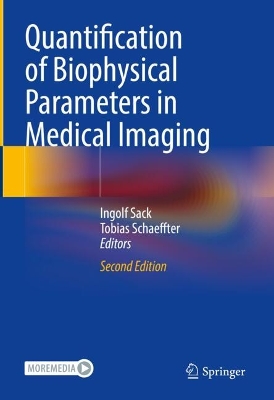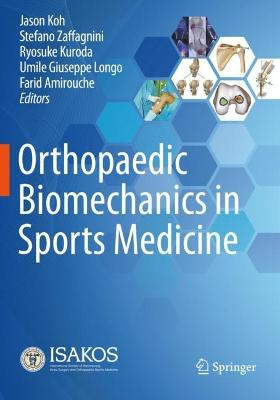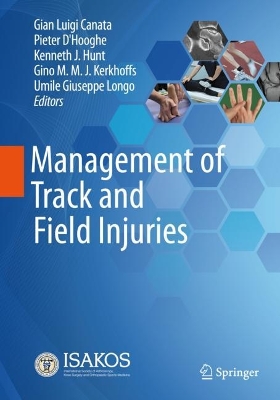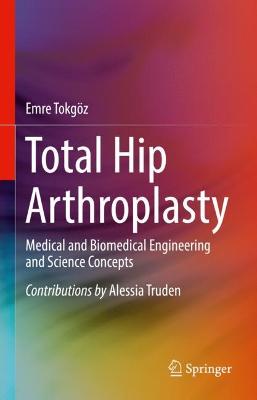Advances in Total Hip Arthroplasty
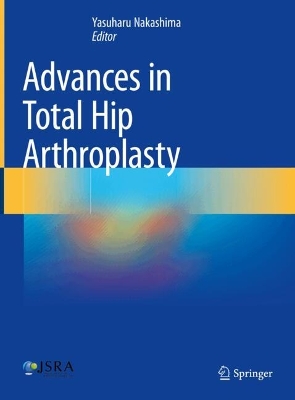 portes grátis
portes grátis
Advances in Total Hip Arthroplasty
Nakashima, Yasuharu
Springer Verlag, Singapore
12/2024
519
Dura
9789819724604
Pré-lançamento - envio 15 a 20 dias após a sua edição
Descrição não disponível.
Part I History and development of THA.- Chapter 1 History of THA development.- Chapter 2 THA development in Japan.- Chapter 3 Jikei-type artificial hip joint and Maesawa-type axial-rotation type artificial hip joint (Nemoto Shokai).- Chapter 4 SOM and KYM hip prostheses (Mizuho).- Chapter 5 Nishio's resurfacing hip arthroplasty (Mizuho).- Chapter 6 Bioceram Types 1, 2, 4, 5 (Kyocera).- Chapter 7 AMS HA CUP and PerFix HA STEM (Kyocera).- Chapter 8 K-MAX ABC HIP System 1992 and AHFIX Q HIP System 2007 (Kyocera).- Chapter 9 S-LOCK Stem 2003 (Kyocera).- Chapter 10 CentPillar Grit Blast HA Stem 2003 and TMZF Plasma Spray HA Stem 2007 (Stryker).- Chapter 11 SC Stem (Kyocera).- Chapter 12 DCM-J Natural-Hip system (Zimmer).- Chapter 13 APS 2008 (Zimmer).- Part II Anatomy of the hip joint.- Chapter 14 Functional anatomy of the hip joint specific to THA.- Chapter 15 Pelvic and femoral morphology in developmental dysplasia of the hip.- Part III Biomechanics of the hip joint.- Chapter 16 Gait and movement analysis.- Chapter 17 Computer simulation.- Chapter 18 Bone remodeling and stress shielding.- Part IV Biomaterials in arthroplasty.- Chapter 19 Polyethylene wear and osteolysis.- Chapter 20 Ultra-High Molecular Weight Polyethylene.- Chapter 21 Polyethylene (vitamin E mixed).- Chapter 22 Polyethylene (MPC polymer).- Chapter 23 Metal-on-metal THA.- Chapter 24 Ceramic-on-ceramic THA.- Chapter 25 Surface treatment of cementless cups and stems.- Chapter 26 Iodine coating artificial hip joints.- Chapter 27 Silver-containing hydroxyapatite-coated artificial hip joints.- Chapter 28 Shape and surface roughness of cement cups and stems.- Part V Surgical techniques.- Chapter 29 Basic surgical techniques for cementless THA.- Chapter 30 Basic surgical techniques for cement THA.- Part VI Implant design.- Chapter 31 Anatomical stem.- Chapter 32 Fit and Fill stem.- Chapter 33 Taper Wedge stem.- Chapter 34 Short Stem.- Chapter 35 Zweymueller stem.- Chapter 36 Full HA stem.- Chapter 37 Modular: S-ROM stem.- Chapter 38 Modular neck stem.- Chapter 39 Surface replacement.- Chapter 40 Custom made stem.- Chapter 41 Polished tapered stem.- Chapter 42 Composite beam stem.- Part VII Principles in surgical procedures.- Chapter 43 Hip center.- Chapter 44 Offset.- Chapter 45 Safe zone.- Chapter 46 Soft-tissue evaluation.- Chapter 47 Leg length discrepancy.- Part VIII Preoperative planning.- Chapter 48 Preoperative planning.- Chapter 49 Risk assessment (comorbidities).- Part IX Surgical techniques - approaches.- Chapter 50 Direct anterior approach (DAA).- Chapter 51 Anterolateral OCM approach.- Chapter 52 Anterolateral-supine (AL-S) approach.- Chapter 53 Mini-one anterolateral approach.- Chapter 54 Posterolateral approach.- Chapter 55 Conjoined tendon preserving posterior (CPP) approach.- Part X Computer assisted surgery.- Chapter 56 CT-based navigation.- Chapter 57 Image-free navigation.- Chapter 58 Portable navigation.- Chapter 59 Robotic surgery.- Chapter 60 Patient-specific instruments.- Part XI Postoperative rehabilitation.- Chapter 61 Range of motion, walking function, and muscle strength.- Chapter 62 Clinical Path.- Part XII Postoperative function and patient satisfaction.- Chapter 63 Functional evaluation.- Chapter 64 JOA Hip score, JOA Hip Disease Evaluation Questionnaire, and Locomotive Syndrome.- Chapter 65 Short Form Survey, EQ5D, Oxford Hip Score, Hip Disability and Osteoarthritis Outcome Score, Forgotten Joint Score, and Patient Joint Perception.- Chapter 66 Postoperative sports activities.- Chapter 67 Keys to improving patient satisfaction.- Part XIII Clinical results.- Chapter 68 Young people.- Chapter 69 Elderly people.- Chapter 70 Developmental Dysplasia of the Hip (DDH).- Chapter 71 Idiopathic osteonecrosis of the femoral head.- Chapter 72 Rheumatoid arthritis.- Chapter 73 Traumatic arthropathy.- Part XIV Difficult cases.- Chapter 74 THA with subtrochanteric shortening osteotomy for Crowe group IV dislocated hips.- Chapter 75 Ankylosed hip joint.- Chapter 76 THA after osteotomy.- Chapter 77 Posterior pelvic tilt cases (spinal and pelvic alignment).- Chapter 78 Coxa vara.- Chapter 79 Dorr classification type C.- Chapter 80 Bilateral same-day surgery.-Part XV Management for complications.- Chapter 81 Pain management.- Chapter 82 Bleeding control.- Chapter 83 Deep vein thrombosis.- Chapter 84 Infection.- Chapter 85 Adverse reactions to metal debris (ARMD).- Chapter 86 Periprosthetic fracture.- Chapter 87 Nerve paralysis.- Chapter 88 Instability.- Chapter 89 Iliopsoas muscle impingement.- Part XVI Registry.- Chapter 90 Japanese Orthopaedic Association National Registry System (JOANR).
Este título pertence ao(s) assunto(s) indicados(s). Para ver outros títulos clique no assunto desejado.
Evidence-based surgical techniques;Biomechanics;Biomaterial;Range of Motion;Computer assisted surgery
Part I History and development of THA.- Chapter 1 History of THA development.- Chapter 2 THA development in Japan.- Chapter 3 Jikei-type artificial hip joint and Maesawa-type axial-rotation type artificial hip joint (Nemoto Shokai).- Chapter 4 SOM and KYM hip prostheses (Mizuho).- Chapter 5 Nishio's resurfacing hip arthroplasty (Mizuho).- Chapter 6 Bioceram Types 1, 2, 4, 5 (Kyocera).- Chapter 7 AMS HA CUP and PerFix HA STEM (Kyocera).- Chapter 8 K-MAX ABC HIP System 1992 and AHFIX Q HIP System 2007 (Kyocera).- Chapter 9 S-LOCK Stem 2003 (Kyocera).- Chapter 10 CentPillar Grit Blast HA Stem 2003 and TMZF Plasma Spray HA Stem 2007 (Stryker).- Chapter 11 SC Stem (Kyocera).- Chapter 12 DCM-J Natural-Hip system (Zimmer).- Chapter 13 APS 2008 (Zimmer).- Part II Anatomy of the hip joint.- Chapter 14 Functional anatomy of the hip joint specific to THA.- Chapter 15 Pelvic and femoral morphology in developmental dysplasia of the hip.- Part III Biomechanics of the hip joint.- Chapter 16 Gait and movement analysis.- Chapter 17 Computer simulation.- Chapter 18 Bone remodeling and stress shielding.- Part IV Biomaterials in arthroplasty.- Chapter 19 Polyethylene wear and osteolysis.- Chapter 20 Ultra-High Molecular Weight Polyethylene.- Chapter 21 Polyethylene (vitamin E mixed).- Chapter 22 Polyethylene (MPC polymer).- Chapter 23 Metal-on-metal THA.- Chapter 24 Ceramic-on-ceramic THA.- Chapter 25 Surface treatment of cementless cups and stems.- Chapter 26 Iodine coating artificial hip joints.- Chapter 27 Silver-containing hydroxyapatite-coated artificial hip joints.- Chapter 28 Shape and surface roughness of cement cups and stems.- Part V Surgical techniques.- Chapter 29 Basic surgical techniques for cementless THA.- Chapter 30 Basic surgical techniques for cement THA.- Part VI Implant design.- Chapter 31 Anatomical stem.- Chapter 32 Fit and Fill stem.- Chapter 33 Taper Wedge stem.- Chapter 34 Short Stem.- Chapter 35 Zweymueller stem.- Chapter 36 Full HA stem.- Chapter 37 Modular: S-ROM stem.- Chapter 38 Modular neck stem.- Chapter 39 Surface replacement.- Chapter 40 Custom made stem.- Chapter 41 Polished tapered stem.- Chapter 42 Composite beam stem.- Part VII Principles in surgical procedures.- Chapter 43 Hip center.- Chapter 44 Offset.- Chapter 45 Safe zone.- Chapter 46 Soft-tissue evaluation.- Chapter 47 Leg length discrepancy.- Part VIII Preoperative planning.- Chapter 48 Preoperative planning.- Chapter 49 Risk assessment (comorbidities).- Part IX Surgical techniques - approaches.- Chapter 50 Direct anterior approach (DAA).- Chapter 51 Anterolateral OCM approach.- Chapter 52 Anterolateral-supine (AL-S) approach.- Chapter 53 Mini-one anterolateral approach.- Chapter 54 Posterolateral approach.- Chapter 55 Conjoined tendon preserving posterior (CPP) approach.- Part X Computer assisted surgery.- Chapter 56 CT-based navigation.- Chapter 57 Image-free navigation.- Chapter 58 Portable navigation.- Chapter 59 Robotic surgery.- Chapter 60 Patient-specific instruments.- Part XI Postoperative rehabilitation.- Chapter 61 Range of motion, walking function, and muscle strength.- Chapter 62 Clinical Path.- Part XII Postoperative function and patient satisfaction.- Chapter 63 Functional evaluation.- Chapter 64 JOA Hip score, JOA Hip Disease Evaluation Questionnaire, and Locomotive Syndrome.- Chapter 65 Short Form Survey, EQ5D, Oxford Hip Score, Hip Disability and Osteoarthritis Outcome Score, Forgotten Joint Score, and Patient Joint Perception.- Chapter 66 Postoperative sports activities.- Chapter 67 Keys to improving patient satisfaction.- Part XIII Clinical results.- Chapter 68 Young people.- Chapter 69 Elderly people.- Chapter 70 Developmental Dysplasia of the Hip (DDH).- Chapter 71 Idiopathic osteonecrosis of the femoral head.- Chapter 72 Rheumatoid arthritis.- Chapter 73 Traumatic arthropathy.- Part XIV Difficult cases.- Chapter 74 THA with subtrochanteric shortening osteotomy for Crowe group IV dislocated hips.- Chapter 75 Ankylosed hip joint.- Chapter 76 THA after osteotomy.- Chapter 77 Posterior pelvic tilt cases (spinal and pelvic alignment).- Chapter 78 Coxa vara.- Chapter 79 Dorr classification type C.- Chapter 80 Bilateral same-day surgery.-Part XV Management for complications.- Chapter 81 Pain management.- Chapter 82 Bleeding control.- Chapter 83 Deep vein thrombosis.- Chapter 84 Infection.- Chapter 85 Adverse reactions to metal debris (ARMD).- Chapter 86 Periprosthetic fracture.- Chapter 87 Nerve paralysis.- Chapter 88 Instability.- Chapter 89 Iliopsoas muscle impingement.- Part XVI Registry.- Chapter 90 Japanese Orthopaedic Association National Registry System (JOANR).
Este título pertence ao(s) assunto(s) indicados(s). Para ver outros títulos clique no assunto desejado.



